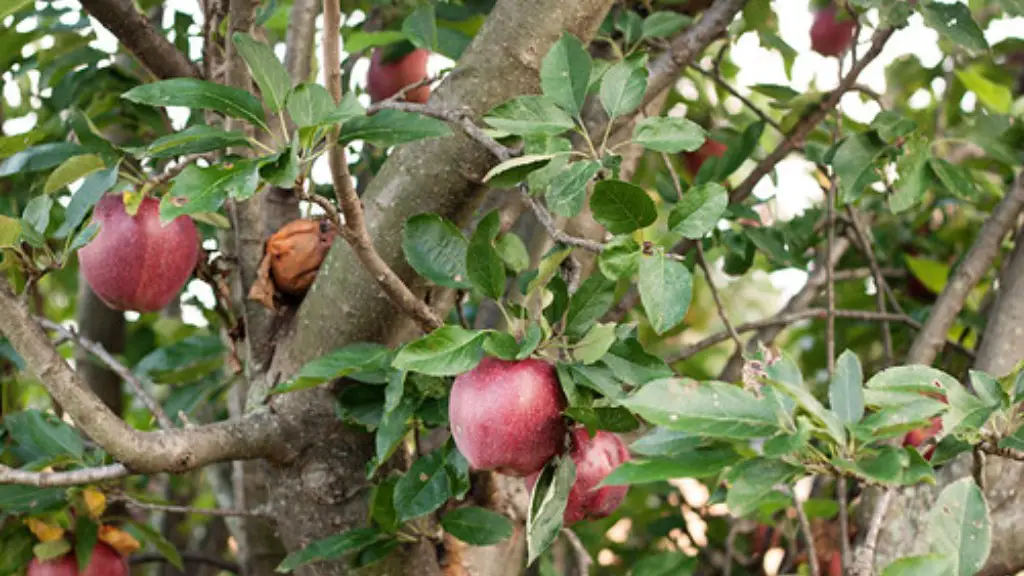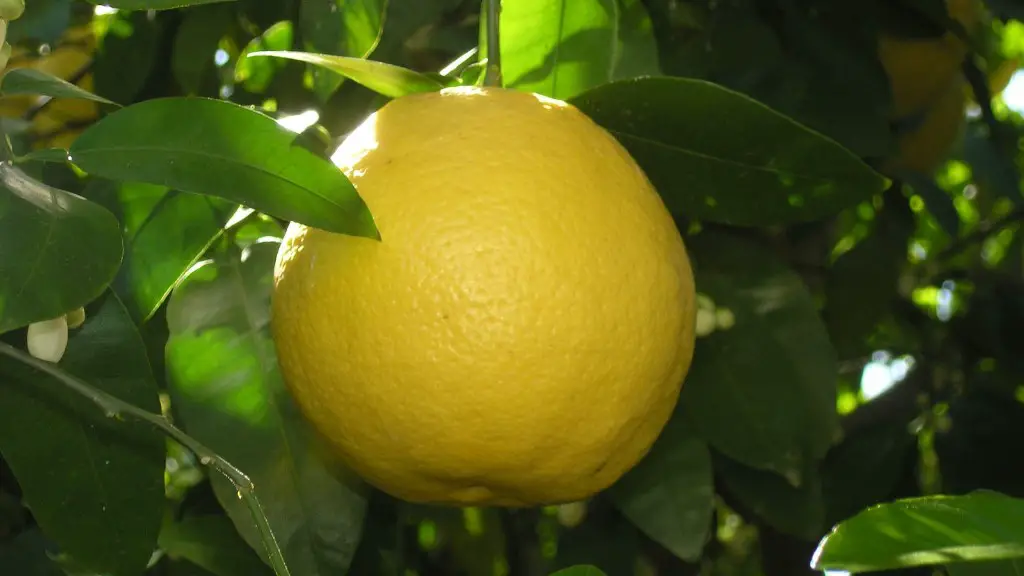Pruning water shoots on an apple tree (Malus domestica) is important for maintaining its vigor, productivity, and health. Without pruning, water shoots will grow from the vertical branches and the trunk of the tree, eventually covering the entire tree in a “lacy” canopy. Careful pruning of water shoots can benefit the tree flowers and fruits, by allowing for maximum light exposure and by reducing the amount of energy that the tree expends producing large amounts of shoots. Pruning should be done as soon as possible after the water shoots are visible and growing.
The best way to identify water shoots is to inspect the apple tree for new growth, characterized by thin, upright stems with rudimentary leaves. Water shoots should generally be removed, though with some caution: removing all water shoots can leave the tree vulnerable to environmental factors. The exception occurs when one or two vigorous shoots originate from the joint of a major branch and trunk and can be left if their height and growth are monitored closely.
Before pruning, one should prepare the tools, even if it is merely a pair of hand-held shears. It is also important to pruning all water shoots at the points where they join major branches: failure to do so can leave the tree vulnerable to disease or pest infestation. It is also important to prune out any weak, diseased, and dead branches. Finally, it is recommended to prune a small portion of shoots at the start of the season, followed by additional pruning as the season progresses.
When pruning water shoots, it is important to keep the following tips in mind. First, prune water shoots after flowering and or later in the dry season (preferably late spring or early summer). This ensures that the water shoots that are pruned receive minimal sap flow at the time of pruning. Secondly, use clean shears, pruning saws and saw blades when pruning water shoots to avoid disease spread. Thirdly, avoid pruning water shoots directly at their base, as this can damage the branch or trunk they are growing from.
In conclusion, proper pruning of water shoots on an apple tree is a key factor in maintaining its health and productivity. It is important to prune water shoots as soon as they are visible and growing, and to choose a time of year when the tree is not in full sap flow. Pruning tools should be cleaned before use, and water shoots should be cut at their connection joint with the major branch or trunk. In following these tips, one can ensure that their apple tree remains healthy and productive for years to come.
Rejuvenation Pruning
Rejuvenating water shoots is an alternative to simply cutting them off at the base. Rejuvenating shoots involves cutting them off at their connection joint with the major branch and then cutting the major branch at an alternate location higher up on the apple tree, so that the shoots have an area with more sap flow. Doing this will help water shoots grow more quickly, although they may become weaker if not carefully monitored. Rejuvenation pruning is best done when the water shoots are still new, as older shoots are more likely to die off.
Rejuvenation pruning is a great way to give the apple tree a boost of energy and vigor. If a large proportion of the tree canopy is covered in water shoots, pruning the majority of them can reduce the energy needed for them to grow. Rejuvenation pruning can also produce thicker branches and create room for more light to filter into the tree. Lastly, by cutting off the shoots at their joints with major branches, the tree is better protected from environmental elements such as wind and rain.
When rejuvenating water shoots, it is important to use clean, sharp tools to make clean cuts. The number of major branches that should be pruned should be minimized to ensure that the tree remains stable. Remember that more than 1/3 of the tree’s main branches should be left in place. Lastly, whereas regular pruning should be done in the dry season, rejuvenation pruning is best done in the wet season when sap flow is more plentiful.
Fruit Pruning
As mentioned earlier, water shoots should be pruned off after flowering. This is because water shoots absorb a great deal of sap energy, energy that is needed for the development of flowers and fruits. Pruning off the water shoots increases the amount of energy available for the development of fruit, thereby improving fruit size and yield. In some cases, however, it may be beneficial to prune off water shoots before flowering, as this will open up the tree canopy and increase the amount of light available for the flowers and fruits.
When pruning for fruit, it is important to prune off any branches that appear diseased or dead, as well as any branches that are in danger of crossing. Prune as little as possible, and never remove more than 1/3 of the main branches. Lastly, when pruning off water shoots, it is important to cut them off below the flower clusters: if they are allowed to stay, they can overshadow the fruits and reduce their quality.
Seasonal Pruning
Seasonal pruning is an important part of keeping an apple tree healthy and productive. In the winter, it is important to prune off any weak, dead, or diseased branches. In the early spring, it is important to prune off any branches that cross, as well as water shoots. In the late spring and early summer, it is important to prune off any shoots that are growing up to the sky or are competing with other branches for light. Lastly, in the late autumn, prune off any branches that are in danger of crossing or competing.
In conclusion, pruning water shoots on an apple tree is essential for maximizing its health and productivity. Pruning should occur as soon as the shoots become visible, and tools should be kept clean to prevent disease transmission. Depending on the time of year, specific types of pruning may be beneficial, ranging from fruit pruning to rejuvenation pruning. By implementing these tips, one can ensure that their apple tree remains healthy and productive for years to come.



